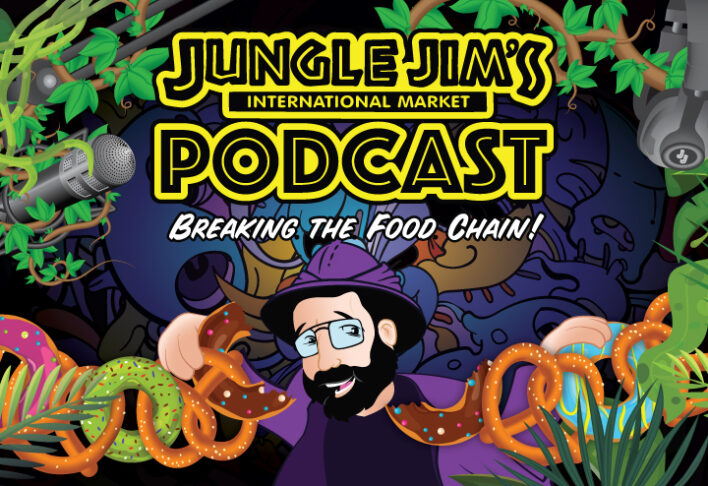
Toast the New Year With Jungle Jim’s International Market
Back to feed- Posted: 12/30/2016
- Categories: Discoveries at the Jungle
All Champagnes Are Sparkling Wine, but Not All Sparkling Wines Are Champagnes
Champagnes and sparkling wines are created the exact the same way. They are both fermented like a wine, but more yeast and sugar is added when they are bottled to induce a second fermentation. As the yeast eat the sugars they create carbon dioxide, which in turn will carbonate the wine. This is why you see the crown cap, or cage made of wires, that holds down the cork. Without it, the carbon dioxide would push the cork out and all carbonation would be lost.
So what’s the difference between a champagne and a sparkling wine? In order to be classified as a champagne the wine must be produced within the Champagne region in France. The name champagne has been legally protected since the 1800s. If the wine is made outside of the Champagne region, it is just simply a “sparkling wine.”
Why Do We Drink Champagne During Special Occasions Like New Year’s?
In the early days of champagne, only the wealthiest noble families could afford to buy it, but as time went on, merchant class families started building their fortunes. They began to buy more and more champagne, but since they still could not afford to drink it regularly they would save it for special occasions. This tradition carried on throughout generations, and we still drink the bubbly for New Year’s and other celebrations throughout the year.
What Champagne or Sparkling Wine Should You Choose For Your New Year’s Toast?
TJ, our Fairfield wine manager, shared three of his favorites to consider for your New Year’s celebration.
|
Gruet Methode Champenoise
Gruet Vineyard is located in New Mexico, which means this is classified as a sparkling wine. The family has been producing wine since 1952, but actualy started in France. They moved to New Mexico in 1983 and continued their legacy making fine wines, right here in the United States. This particular sparkling wine brings out aromas of green apple and citrus. It’s crisp with a little bit of acidity, complemented by a touch of yeast on the finish. It’s bottle aged for a minimum of 24 months. |
|
Marques De GeliDa Brut Gran Reserva 2012
Marques de Gelida is owned by six family growers and is based in the Penedes region of Spain, which it has been since the 1600s. This offering is also a sparkling wine and comes from older vines from a higher elevation. It’s aged for over three years in the bottle, and is produced from the top selection of the juice from the first pressing. Tasting notes include fresh apple, white currants, grapefruit and other citrusy flavors. It’s fresh, dry and light bodied, making for a refreshing experience. |
|
Pierre Morlet Grand Reserve Brut Champagne
The Morlet family has been growing grapes in the Avenay-Val-d’Or region in France since the 1800s. Auguste Morlet got his start selling their grapes to wine producers and at local markets, but as time went on his son, Gaston, was the one who pushed the family to start producing champagne. This is the only true champagne on our list, as Avenay-Val-d’Or is within the Champagne region of France. It has wonderful peach and red apple notes, with a hint of pastry on the end. As you drink it you will also start to notice a honey undertone, which we think is quite nice. |






